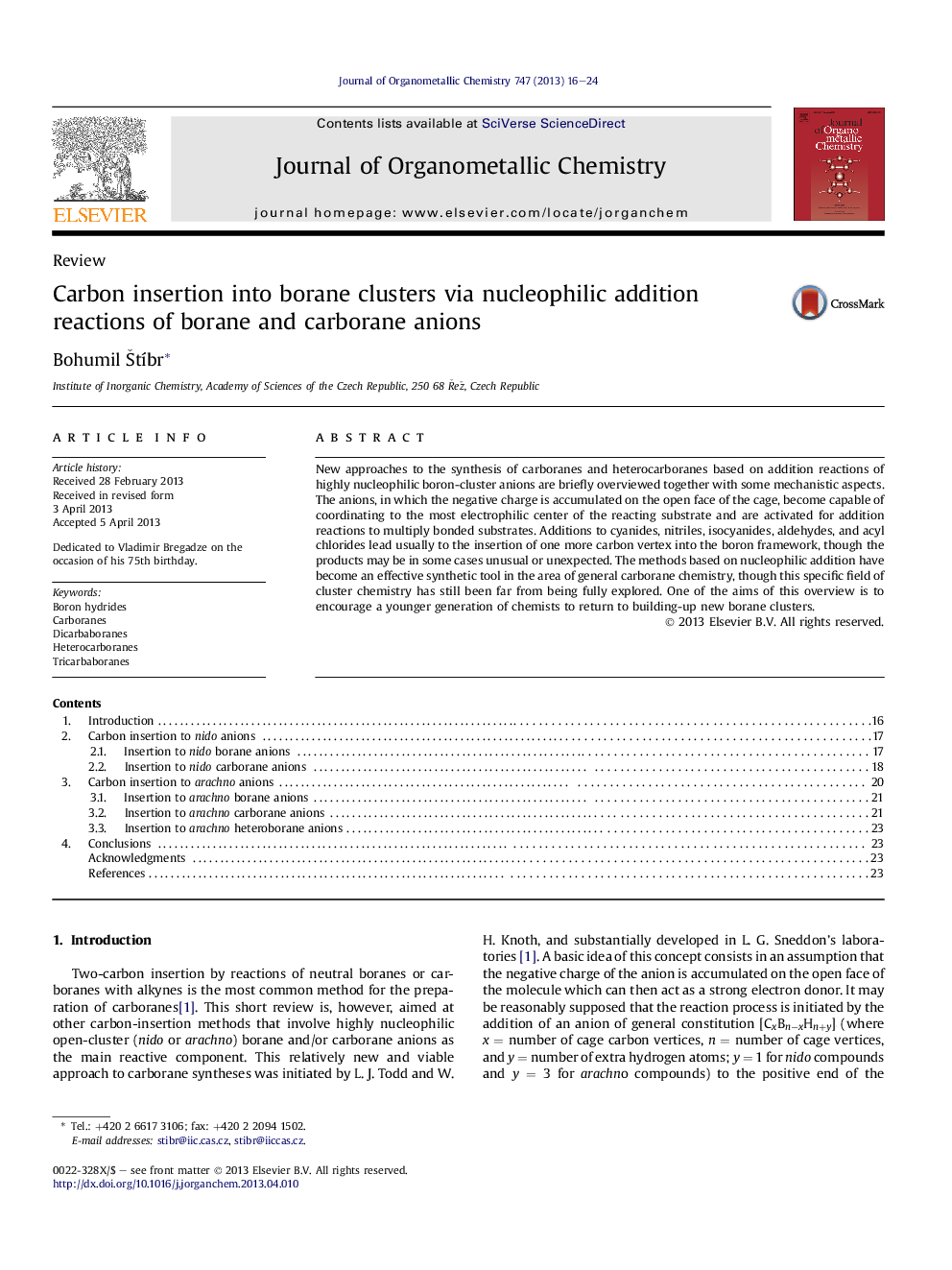| Article ID | Journal | Published Year | Pages | File Type |
|---|---|---|---|---|
| 1323665 | Journal of Organometallic Chemistry | 2013 | 9 Pages |
•General characteristics of nucleophilic addition reactions of cluster borane anions.•Addition reactions of nido borane and carborane anions to multiple bonds in electrophilic substrates.•Addition reactions of arachno borane and carborane anions to multiple bonds in electrophilic substrates.•New approaches to the synthesis of carboranes and heterocarboranes.•Mechanistic aspects of nucleophilic addition reactions.
New approaches to the synthesis of carboranes and heterocarboranes based on addition reactions of highly nucleophilic boron-cluster anions are briefly overviewed together with some mechanistic aspects. The anions, in which the negative charge is accumulated on the open face of the cage, become capable of coordinating to the most electrophilic center of the reacting substrate and are activated for addition reactions to multiply bonded substrates. Additions to cyanides, nitriles, isocyanides, aldehydes, and acyl chlorides lead usually to the insertion of one more carbon vertex into the boron framework, though the products may be in some cases unusual or unexpected. The methods based on nucleophilic addition have become an effective synthetic tool in the area of general carborane chemistry, though this specific field of cluster chemistry has still been far from being fully explored. One of the aims of this overview is to encourage a younger generation of chemists to return to building-up new borane clusters.
Graphical abstractNew approaches to the synthesis of carboranes and heterocarboranes based on addition reactions of highly nucleophilic boron-cluster anions to multiply bonded substrates are briefly overviewed.Figure optionsDownload full-size imageDownload as PowerPoint slide
